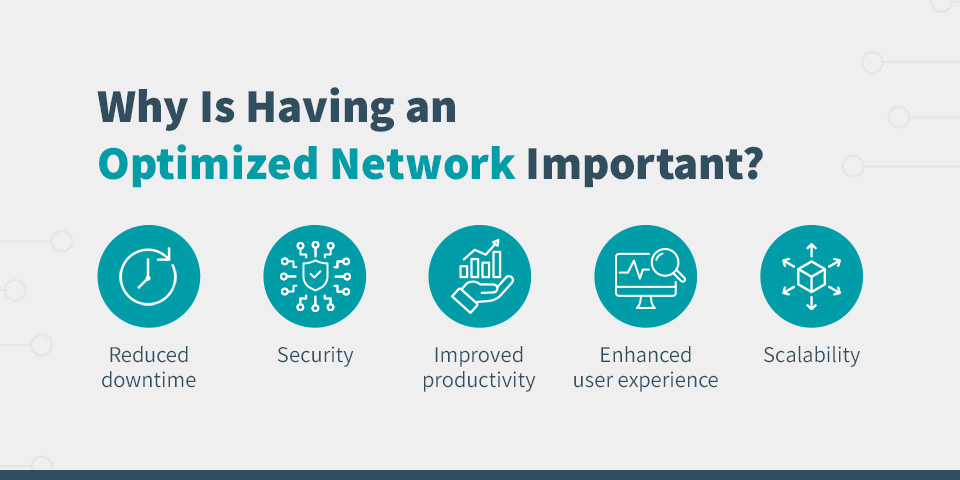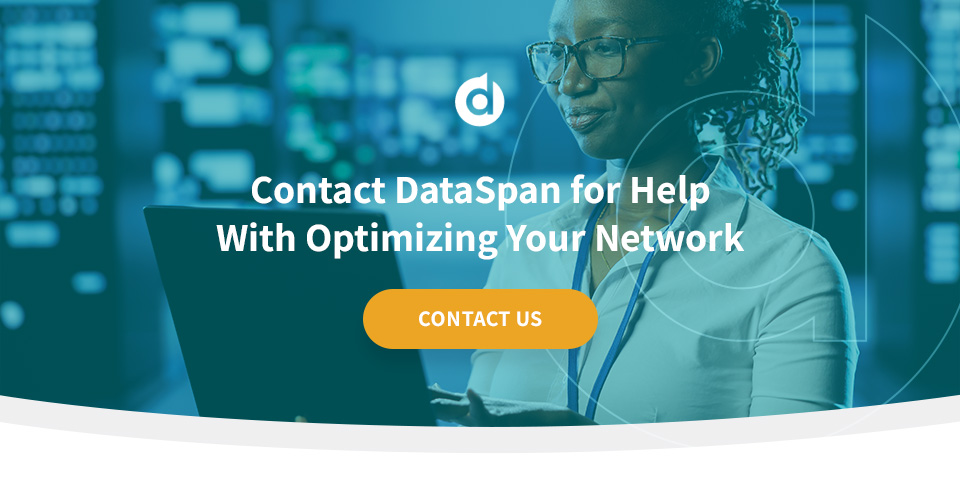
Establishing an Optimized Network With Switches and Routers
According to Uptime’s Data Center Resiliency Survey, network issues were the top reason for downtime in 2022. The complex landscape of cloud-based applications and software-defined architectures makes it more important than ever to have a network that can keep pace with your operations.
DataSpan is one of the largest distributors of data storage products and services in the United States. We offer custom technology solutions, including networking switches and routers, to meet your IT needs. Read on to learn how to optimize your organization’s network.
What Are Computer Network Routers and Switches?
Routers and switches are essential components of computer networks, but they have unique functions within those networks.
Switches are the core connecting elements between devices, helping them communicate and facilitating the smooth passage of information. A switch allows these devices, which might be a computer, smartphone, tablet or printer, to communicate with each other, no matter where they are in the building.
Some key benefits of switches include:
- Support of local area networks.
- Increased network bandwidth.
- Improved network performance.
- Reduced frame collisions with collision domains.
- Support of centralized management to reduce workload.
If switches are the connecting element for devices, the router is the connecting element for switches. Routers connect switches and their networks to form a larger network and move data packets from one network to another. A key feature of a router is allowing devices within the network to share the same internet connection. They also control traffic to ensure the most efficient transfer of information and offer protection from outside threats.
Other benefits routers offer include:
- Reducing network traffic with collision and broadcast domains.
- Minimizing traffic load with dynamic routing algorithms.
- Allowing communication between different network architectures, like Ethernet and token rings.
Factors That Impact Network Performance
Understanding what affects network performance can help you identify particular pain points that need optimization.
- Size: Is your bandwidth sufficient to accommodate all your network devices, users, endpoints and applications? Too many devices or users can slow down your network, leading to poor performance.
- Distance: The distance data packets have to travel also impacts network performance. Longer distances can cause latency that reduces network speed.
- Transmission medium: The physical medium you use — wired or wireless connections — also affects network performance. While wired networks using fiber optic cables have less latency, damaged and loose cables can impact performance. A higher number of network hops can also cause more latency.
- Network congestion: If you’re working with large data packets, they can back up the transmission speed and slow performance.
- Change and patch management: Have you made any changes to hardware or performed any patches without testing them? Even minor updates can cause havoc in your network if you don’t first test them to ensure they work well with the existing systems.
- Hardware: Outdated devices and cables can slow network traffic, leading to bottlenecks. Meanwhile, routers and switches can have CPU, memory and backplane utilization issues.
Why Is Having an Optimized Network Important?

Most businesses rely on internet-connected devices to communicate, collaborate and store data, and slow processing speeds can hamper efficiency. Poorly performing networks may also pose security risks, leaving your data at risk of being compromised.
The benefits of a fully optimized network include:
- Reduced downtime: Problems with your network can lead to downtime, where users cannot access essential applications. If your network can’t handle the traffic load, you might lose valuable business opportunities. Uptime’s survey reported that one hour of network downtime resulted in around $1 million in losses for 40% of respondents.
- Security: Vulnerabilities in your network — due to outdated hardware or insufficient protections — can put you at risk for a host of threats, from ransomware to data breaches.
- Improved productivity: Bottlenecks, network congestion and latency can all slow down your operations. Optimizing your network ensures your whole organization works at peak efficiency. Users can quickly access the applications they need without lags, and online meetings won’t suffer interruptions from bad network connections.
- Enhanced user experience: Optimizing your network also improves the user experience, making operations seamless. If you need to support functions like e-commerce or applications, a bad network can cause you to lose business.
- Scalability: With an optimized network, you don’t have to worry that your organization will outgrow your network’s capabilities.
Ways to Optimize Your Network
There are a few approaches you can take to optimize your network:
- Quality of service: Taking a QoS approach means your organization’s network prioritizes certain traffic over others. For example, if you have a lot of virtual meetings with clients, you can set your QoS up to prioritize video and voice calls over other kinds of data. This method optimizes your network for specific business needs, ensuring the network bandwidth is most effective for your most important tasks.
- Data caching: You can lower bandwidth consumption by caching frequently used data in your network. Storing this data on local servers or devices frees up your network for other essential functions. The only caveat is that too much cached data can build up and might slow down the network.
- Software-defined wide area network: A more flexible, scalable version of a traditional WAN, SD-WANs use off-the-shelf hardware to improve the speed and efficiency of your network traffic. They have particular benefits for cloud-based applications.
- Partner with IT services experts: Your organization is busy with standard operations, so why not let IT services experts design a solution for you? DataSpan can optimize your network by building a system for your unique needs.
Custom Switch and Router Solutions for Top Industry Partners
Network optimization starts with having the right tools at your disposal. DataSpan is committed to providing organizations with the best solutions to enhance network performance and protect data. We can customize a suite of networking professional services with best-in-class switches and routers.
DataSpan’s high-end switch and router solutions can ensure your network enjoys the highest level of performance. They can also enhance your network’s stability and security while reducing costs and risks.
Contact DataSpan for Help With Optimizing Your Network
DataSpan has been in the IT services business for 50 years, and we’re constantly adapting to develop the best ways to meet your organization’s IT challenges. Our vendor-agnostic approach means you’ll get unbiased advice and can feel confident that our suggestions are in your organization’s best interest.
Our range of offerings includes physical IT infrastructure, data storage and data center IT services. To learn more about how we can assist your company, request more information or find a local representative.

About the Author: Alex von Hassler’s long term focus is the continued testing, learning, and deployment of modern IT solutions. During his years as a DataSpan team member, his responsibilities grew from managing Salesforce CRM to improving system security, creating marketing initiatives, as well as providing continued support to the highly motivated and experienced team in an ever-changing industry. As DataSpan evolves to provide the best-fitting IT solutions to its customers, Alex von Hassler continues to hone his skills in the world of web-based ERP systems, security, and best customer engagement practices. Empowering such a dynamic team with the right tools provides him with enormous gratification.








